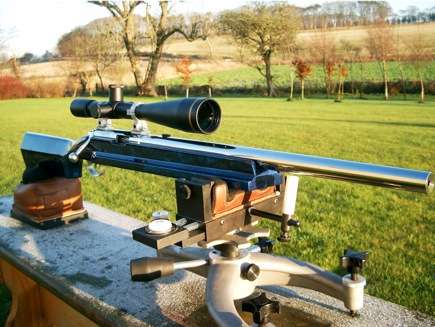

 The Accurate Reloading Forums
The Accurate Reloading Forums  THE ACCURATE RELOADING.COM FORUMS
THE ACCURATE RELOADING.COM FORUMS  Rifles
Rifles  Custom Built Rifles
Custom Built Rifles  Large Stock of Liogier Rasps for the stockmaker
Large Stock of Liogier Rasps for the stockmakerGo  | New  | Find  | Notify  | Tools  | Reply  |  |
| One of Us |
http://forums.accuratereloadin...2711043/m/9541069042 Ad in classifieds. I attached the inventory and price list along with tips for usage of various rasps. When I first started gunsmithing school we were required to shape a stock for a 98 Mauser working entirely from the blank. With the exception of a band saw we did all the stock shaping with files and rasps. We used a #50 Patternmaker’s rasp for the majority of the shaping as it is the ideal tool for this work. The flat side of the half-round is the appropriate tool for the many flats the comprise a sporter rifle stock. After all, a stock is made up mainly of a series of flats with well rounded corners. The top, bottom and sides of the forend all begin as flats. The length of the toe line on the bottom of the buttstock is a flat as is the comb, or top of the buttstock. After band sawing, the flat side of the rasp is used to work these down to the layout lines. The half round side is great for hogging the bulk of wood to create the cheekpiece and form the cheekpiece cove where it meets the buttstock. Then the flat side is used to shape and round the flats to form the contours of the stock. The entire stock shaping could be accomplished with a #49 or #50 rasp. In those days we used machine made rasps that were very good tools for the job. In recent times the #50 rasp production has moved to South America and the quality has plummeted to terrible lows. The problem always was the machine cut teeth lacked a randomness and follow one another making a series of grooves in the wood. While the early machine-made tools had some randomness, the newer tools are completely lacking. Liogier has been “hand stitching” (each tooth is cut with one blow of a hammer on a tri-pointed chisel) rasps in France for four generations. Noel Liogier, the current director of the company has been steeped in rasp-making his entire life. Liogier was introduced to the American #50 rasp and created his own version of the ideas stock shaping toll. The slightly courser cut #49 rasps are nearly identical in length and taper and the contour of the half-round side. The huge difference is the hand stitching bringing up extremely sharp teeth and a random pattern that simply cannot be duplicated by machine. Liogier make a wide variety of rasps for wood and stone sculptors, furniture makers, luthiers and related trades of specialty wood working. Adding the ideal tool for stockmaker’s was a small step for Liogier with little change in production. The stitching, called the “grain” of the rasp is graded by number; the lower the number the courser the rasp. There are fifteen grains from #1 at the very coarsest to #15 grain the finest. A very interesting video of the process of making Liogier rasps can be seen at: https://www.youtube.com/watch?v=gQ09O3d8y9Q. There are other video reviews of the rasps and an interview with Noel Liogier. Steven Dodd Hughes, Another youtube review https://www.youtube.com/watch?v=6DThQm5eCHI ACGG Life Member, since 1985 | ||
|
| One of Us |
Rasps are selling at a steady clip, chain saw sold out of inventory, short on twin-sided flat rasps, check them out while the inventory is still strong! http://forums.accuratereloadin...2711043/m/9541069042 THANKS TO ALL RECENT BUYERS! SDH ACGG Life Member, since 1985 | |||
|
| Powered by Social Strata |
| Please Wait. Your request is being processed... |
|
 The Accurate Reloading Forums
The Accurate Reloading Forums  THE ACCURATE RELOADING.COM FORUMS
THE ACCURATE RELOADING.COM FORUMS  Rifles
Rifles  Custom Built Rifles
Custom Built Rifles  Large Stock of Liogier Rasps for the stockmaker
Large Stock of Liogier Rasps for the stockmaker

Visit our on-line store for AR Memorabilia

